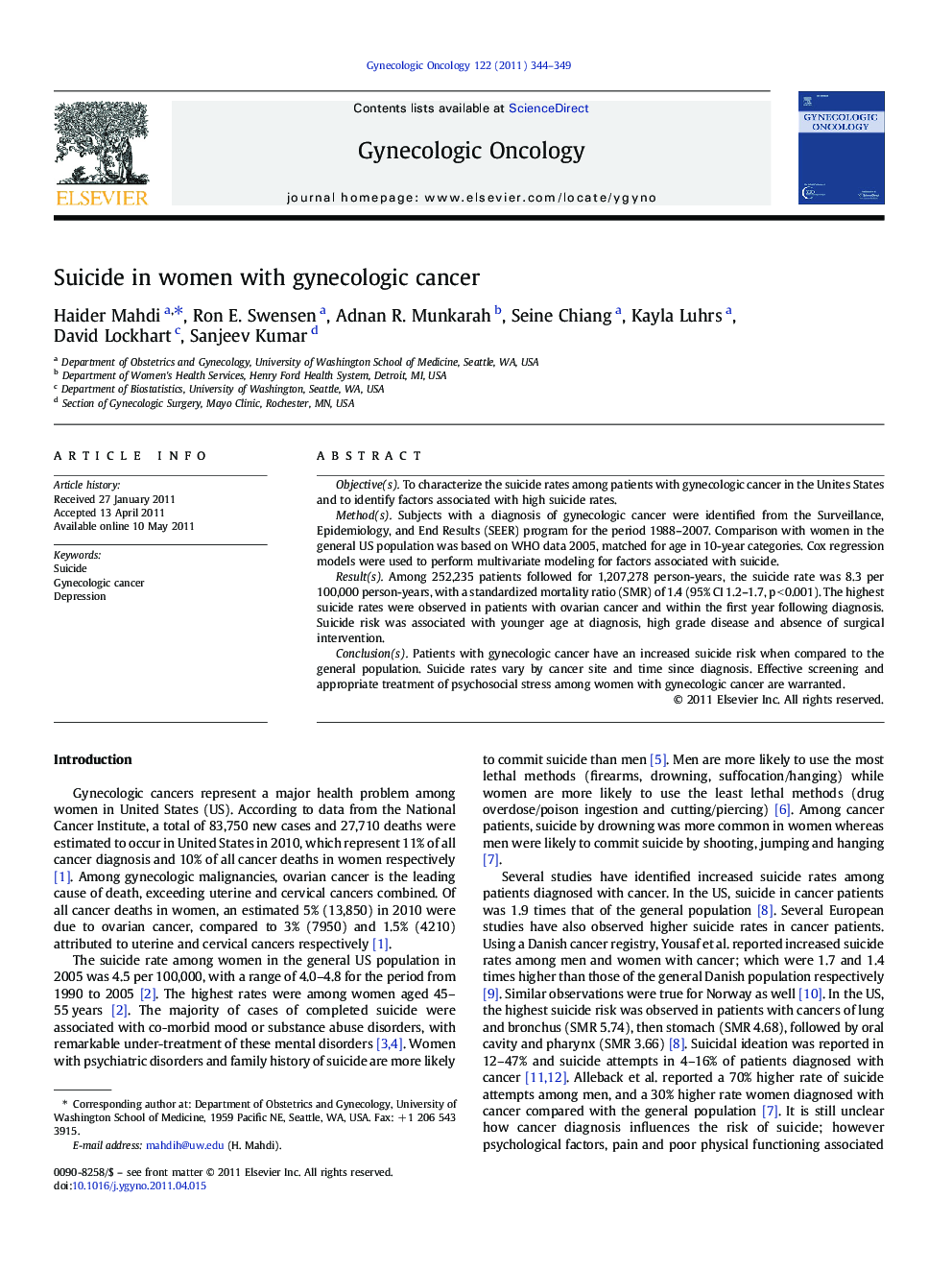| Article ID | Journal | Published Year | Pages | File Type |
|---|---|---|---|---|
| 3947091 | Gynecologic Oncology | 2011 | 6 Pages |
Objective(s)To characterize the suicide rates among patients with gynecologic cancer in the Unites States and to identify factors associated with high suicide rates.Method(s)Subjects with a diagnosis of gynecologic cancer were identified from the Surveillance, Epidemiology, and End Results (SEER) program for the period 1988–2007. Comparison with women in the general US population was based on WHO data 2005, matched for age in 10-year categories. Cox regression models were used to perform multivariate modeling for factors associated with suicide.Result(s)Among 252,235 patients followed for 1,207,278 person-years, the suicide rate was 8.3 per 100,000 person-years, with a standardized mortality ratio (SMR) of 1.4 (95% CI 1.2–1.7, p < 0.001). The highest suicide rates were observed in patients with ovarian cancer and within the first year following diagnosis. Suicide risk was associated with younger age at diagnosis, high grade disease and absence of surgical intervention.Conclusion(s)Patients with gynecologic cancer have an increased suicide risk when compared to the general population. Suicide rates vary by cancer site and time since diagnosis. Effective screening and appropriate treatment of psychosocial stress among women with gynecologic cancer are warranted.
Research highlights► Women with gynecologic cancer have an increased risk of suicide compared with women in the general population. ► Higher suicide rates were observed in patients with ovarian cancer and during the first year following diagnosis.
